| Zeitschrift Umělec 2002/4 >> Reality check — Connection check (Reality Check, Galerie Rudolfinum, Praha) | Übersicht aller Ausgaben | ||||||||||||
|
|||||||||||||
Reality check — Connection check (Reality Check, Galerie Rudolfinum, Praha)Zeitschrift Umělec 2002/401.04.2002 Zuzana Štefková | rezension | en cs |
|||||||||||||
|
Reality Check: Roderick, Buchanan, k r buxey, Phil Colins,
Alan Curral, Graham Fagen, Ori Gerhst, Dryden Goodwin, Luke Gottelier, Nigel Shafran, Lesley Shearer, David Shrigley, Keith Tyson, Michelle Williams, Saskia Olde Wolbers, Shizuka Yokomizo, Bettina von Zwehl Galerie Rudolfinum, Praha 6. 3. – 8. 6. 2003 Ve výstavní síni Rudolfinum provádějí kurátorky Kate Bush a Brett Rogers prostřednictvím děl převážně britských nebo v Británii žijících umělců a jejich fotografických projektů a video-instalací kontrolu reality. Aniž bych se hned na úvod chtěla zaplétat do filosofických a epistemologických tenat slova “realita” obsaženého v názvu výstavy, přesto se zdá důležité toto slovo ohledat a pokusit se o svého druhu kontrolu reality Kontroly reality. V katalogu k výstavě se dočteme, že: “Reality Check je výstava inspirovaná skutečnými věcmi ve skutečném životě – událostmi, lidmi, vztahy, místy, předměty. A přece se nachází v místě, které není plně prožíváno ani není čistým výtvorem imaginace.” Zatímco u malby nebo jiného tradičního uměleckého média je nám jeho fiktivnost a jistá míra abstrakce (každá malba je v posledku plátnem pokrytým barvami) zřejmá, na fotografii byly v tomto ohledu kladeny zcela jiné nároky. Ještě dnes považuje fotografii velká část jejích “konzumentů” za prostředek exaktního přepisu skutečnosti. Přičemž se vytrácí fakt, že i nejméně “umělecká” fotografie, pokud byla pořízena záměrně, selektuje určitý aspekt viděného a obdařuje fotografované okolí významem, který vychází z našeho prožitku světa. Fotografie stejně jako lidský pohled propůjčuje svou intencionalitou věcem smysl. Z věcí se stávají “věci pro nás” a kontrola reality splývá s její interpretací. Zájem umělců a kurátorek se vztahuje právě k této transformativní kvalitě fotografie; řečeno slovy kurátorky, současná generace umělců zkoumá “potenciál média, ne ve smyslu němé technologie a replikace, ale jako diskursivní uměleckou formu s bohatými poetickými možnostmi.” Různé interpretační postupy a posuny, s nimiž se na výstavě setkáme, zahrnují konceptuální “portrét”, dokument, pseudově- deckou klasifikaci, motivy zdvojování a opakování, mimikry přibližující fotografii malbě, fikci sugerující paralelně existující světy, atd. Zvláštní kategorii představují videoinstalace, které se v jednotlivých případech buď přimykají k fotografii svou statičností a absencí děje, ale mnohdy spíše souvisí s filmem, a to jak dokumentárním, tak hraným, případně pornografickým. Přes různost přístupů k “realitě” považuji za velmi silné téma výstavy různé formy motivu distance – přiblížení. Charakteristická je v tomto směru například videoinstalace s názvem Blíž (2002) Drydena Goodwina, ve které autor z odstupu sleduje lidi v osvětlených oknech kanceláří a fastfoodových restaurací a zároveň se jich “dotýká” infračerveným ukazovátkem. Rudá skvrna, cestující po rámech oken a chvějivě obkreslující obrysy neznámých za nimi, připomíná zaměřující infračervený paprsek ostřelovače. Tento “vizualizovaný pohled” však není jednoznačně zhmotněním symbolické agresivity ve smyslu aktivní pozorovatel – pasivní objekt pozorovaní. Pohled z temné ulice do svítícího okna může ztělesňovat i pocit osamění a izolace a to jak na straně “šmírujícího” umělce (potažmo diváka), tak i v případě byznysmena pracujícího pozdě do noci. Konečně v závěru sekvence sledujeme, jak se dosud nic netušící pozorovaný překvapeně ohlíží po zdroji červeného světla, které mu — Reality Check Connection Check In the wide halls of Rudolfinum gallery in Prague, curators Kate Bush and Brett Rogers are carrying out a reality check through the photographic projects and video-installations of British artists. Though I don’t wish to entangle myself straight away in the sticky philosophical and epistemological nets cast by the word “reality,” an inspection of the word is nevertheless necessary, an attempt at a kind of reality check of Reality Check. In the exhibition catalogue we read that “Reality Check is an exhibition inspired by real things in the real world — by events, people, relationships, places, things — while moving between differing levels of truth and pretence.” In painting or other traditional art media fictitiousness and a certain amount of abstraction (in the end every painting is a canvas covered with paint) is a given. But a photograph exists under different requirements. Even today most “consumers” of photography regard it as a tool for the exact transcription of reality. It’s often times forgotten that even the least “artistic” photography, if it is taken intentionally, selects a certain aspect of the seen, and the photographed surroundings are flush with meaning stemming from our experience of the world. Photography, just like the human view, confers meaning to things through its intention. These things become “things for us” and a reality check merges with its interpretation. The interests of the artists and curators relates to this transformational quality of photography. In the curator’s words, the present generation of artists investigates the “medium’s potential, not as a mute technology of replication, but as a discursive art form rich in poetic possibilities.” The various approaches in interpretation and advancement we encounter in the exhibition include the conceptual “portrait,” the document, pseudoscientific classification, motifs of doubling and multiplication, mimicries that bring the photograph closer to the painting, fiction suggesting parallel worlds, among others. Video-installations make up a special category that, in individual cases, either stick to the photograph in its static nature or are devoid of all plot. But often there is also a connection to film, documentary style, narrative and even pornography. Despite the variety of approaches to “reality,” a salient theme was the various ways of working with the motif of distance — approximation. The three-screen video installation Closer (2002) by Dryden Goodwin is one example of this. In the video the artist observes people from a distance in the lighted windows of offices and fast food restaurants while at the same time “touching” them with an infrared pointer. The red spot, sliding along window frames and vibrantly tracing the contours of the unknown people sitting behind them, resembles a sniper’s infrared beam. Yet this “visualized view” is not the materialization of symbolic aggression coming from the active observer to the passive object on view. The gaze from the dark street through the lit up window exudes the artist’s feeling of solitude and isolation. Finally, at the end of the sequence, we realize that up till now none of the people on view has suspected anything, and we are suddenly shocked to see faces turning to look for the source of the red light running over their faces. There the film ends and despite the hint of contact and closeness suggested by the title, both sides are left in their anonymity. A similar configuration appears in the series of photograph by Shizuka Yokomizo called Strangers (1998–2000). The artist’s experience as a native Japanese living in London becomes apparent in the work. For this project the artist sent a written message to unknown people to pose at a certain time after dusk in their home in front of their window so that the artist could photograph them. The models may have accepted the artist’s game, but their meeting is illusory and only succeeds in emphasizing the distance between them. The resulting photos, though different from the previous example by originating from conscious co-operation, again describe the tension between the intimate and isolating sides of view. Alan Currall attempts to make contact with the viewer in his video Message to My Best Friend (2000), but in vain. The work represents a mixture of confession and naive praise, whose recipient could be every potential viewer. Currall, speaking in monologue to the camera, lists reasons for the friendship (everything from your sensitivity and compassion to your collection of records), nevertheless the result is rather comical and embarrassingly awkward, and his personal message is through conceptual emptying transformed into its opposite. Curralls’ confession seems to evoke the anxiety that comes from the absence of real understanding, perceived as a traditional attribute of friendship. From the point of view I have chosen, it is also interesting to compare Bettina von Zwehl’s photographic cycle Untitled II (1999) and Lesley Shearer series of pictures Falling (2001–02). In the first case the neutral appearance of the almost scientifically investigated models is the dominating factor. The subjects wear identical black clothes and together with a gray background the subjects individuality is diminished. The gray frame, expressionless faces and white even light flattens the whole scene, even amplifying the impression of unconcerned photography. However, Bettina von Zwehl offers the seemingly given appearance of the individual concerned, but at the same time her models always undergo various experiments (holding the breath, physically demanding exercises) shortly before taking the pictures. She is referring to the reality that the photography always carries within itself, the manipulation of the model and the control of the photographer. The procedures isolating the “objective” appearance of the photographed individuals moreover are a reminder of the positivistic inquiry into the human subject. This was typical in the 19th century when the photograph and faith in its objective view played a major role. On the contrary, intimacy is the main motif Shearer’s photographs. She also prepares her models before shooting, but unlike Zwehl’s methods, this consisted of long hours spent in talk while consuming alcohol under the burning photographic lamps. The resulting pictures show her subjects on the edge of sleep, at moments of extreme vulnerability, though recorded by the artist with great sensitivity and with the help of soft dim light and a warm color scale reminiscent of the baroque masters. Again here the topic of tension between the closeness and the impression of passing, stressed by the non-present look and strong feeling of separation, distancing the conscious. Her photographs, though, are not only an expression of personal concern for the subject. A sociological subtext appears when we realize that certain expression of resignation and its inner sifting into oneself that characterizes the generation the artist maps. Negrophilia – A ROMANCE (2001) by k r buxey is a love video-story of the artist and her former black lover, created by nearly abstract shots that catch the protagonists during moments of erotic pleasure. The commentary of the artist is not confined to expressions of “negrophilia” and open interpretation of the lovers’ dialogues. It also deals with questions of racist stereotype, the nature of sexual desire, social roles and the position of the artist in a world dominated by convention. Even though A Romance ends with the promise of a possible new start, it is hard to talk about a happy end. In confrontation with the lovers’ intimacy, the otherness stemming from race, ancestry and cultural differences in the end separates the lovers. Buxey nevertheless does not stress the fatality of this separation and irreconcilablity of differences. Through her body, she opens the topic of trans-cultural dialogue. The discussion till now has revolved around works whose subject matter is human. However “reality check” is also a tool for the examination of photographs of things and places. Graham Fagen in his cycle Weapons (2000-01) catalogues and, with a dictionary-like distant language, describes weapons used by both schoolboys and demonstrators in street fights with police, starting with a blowpipe and ending with a petrol bomb. And Ori Gersht in his series of photographs of schools, Knowledge Factories (1999–2001), strikes at the parallel between the uniform functionality of post-war schools and the metaphorical explanation of the school as a montage unit for education. (The title is taken from a contemporary architectonic magazine.) Both works use images from childhood stripped of all myth and the seemingly objective view, evoking through its conceptual focus the categorization of rocks and protozoon. Symptomatically, the title does not anticipate the “end of reality” nor does it celebrate it. Rather this is just a “check,” an activity that suggests contact on the one hand, but on the other it can be distant and impersonal. Nevertheless the project as a whole is not a message about the absence of a deeper meeting with things and people. From many artistic statements follows the awareness of a mental barrier between me and you, the photographer and the world. But there is also the desire to overcome such a barrier. The feeling of distance and otherness considered in relation to its counterpart (whether it’s a person or an object) is not a final answer, but a starting reflection. In the end this is may be one of the premises for a meaningful work of art.
01.04.2002
Empfohlene Artikel
|
|||||||||||||
|
04.02.2020 10:17
Letošní 50. ročník Art Basel přilákal celkem 93 000 návštěvníků a sběratelů z 80 zemí světa. 290 prémiových galerií představilo umělecká díla od počátku 20. století až po současnost. Hlavní sektor přehlídky, tradičně v prvním patře výstavního prostoru, představil 232 předních galerií z celého světa nabízející umění nejvyšší kvality. Veletrh ukázal vzestupný trend prodeje prostřednictvím galerií jak soukromým sbírkám, tak i institucím. Kromě hlavního veletrhu stály za návštěvu i ty přidružené: Volta, Liste a Photo Basel, k tomu doprovodné programy a výstavy v místních institucích, které kvalitou daleko přesahují hranice města tj. Kunsthalle Basel, Kunstmuseum, Tinguely muzeum nebo Fondation Beyeler.
|







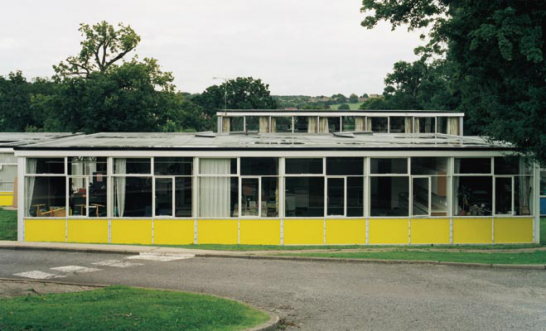













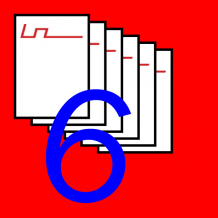




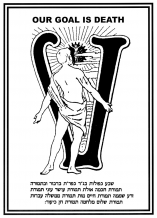

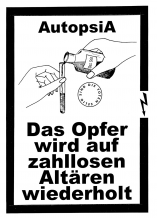
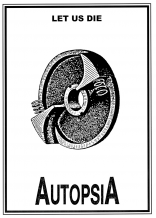


 New book by I.M.Jirous in English at our online bookshop.
New book by I.M.Jirous in English at our online bookshop.
Kommentar
Der Artikel ist bisher nicht kommentiert wordenNeuen Kommentar einfügen